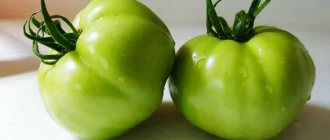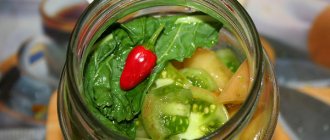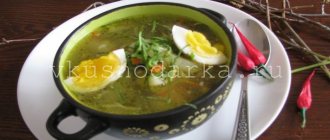Times change, but pickled tomatoes, as an ideal Russian appetizer for the table, both on weekdays and on holidays, remain unchanged. In ancient times, dishes were not pampered with their variety, so tomatoes were fermented exclusively in wooden barrels. Today, apartment conditions are not well adapted to such bulky volumes, and the imagination of housewives has no limits - jars, pans, buckets, and even plastic bags are used to ferment tomatoes.
How to ferment tomatoes at home
There are two fundamentally different approaches to pickling tomatoes. The first is traditional, and is closest to the actions that our great-grandmothers performed to preserve vegetables for the winter, using wooden barrels. Its main advantage is the fact that vegetables retain and even increase a large amount of useful substances. Well, the taste, as well as the aroma of pickles made in this way, deserves the highest marks. It’s not for nothing that many modern recipes for pickled tomatoes are called “barrel-like.” But the main disadvantage of this fermentation method is the long production time - at least 20-30 days. But pickled tomatoes are stored in favorable conditions for a long time - until spring.
Advice! There is a popular belief that if you ferment vegetables during the full moon, they can quickly spoil. Therefore, it is better not to take risks and postpone fermentation if the moon brightly illuminates the sky.
Other recipes also deserve attention, if only because they make fermenting tomatoes quite quickly - after just 3-4 days you can already taste the tomatoes. And according to some recipes, they are ready for use within a day after preparation.
Despite some significant differences, both approaches have common manufacturing rules that must be followed to ensure that pickled tomatoes taste good and can be stored for a sufficiently long time.
- Tomatoes, as well as all other vegetables and herbs that are used for pickling, must be carefully sorted, removing all fruits, even those with slight damage.
- Tomatoes are fermented in varying degrees of maturity: from ripe to completely green. But only fruits of uniform ripeness can be fermented in one container, since the fermentation time depends on the ripeness of the tomatoes. Ripe tomatoes ferment much faster, in 20-30 days in suitable conditions.
- The color of tomatoes does not play a special role when fermenting. But, since yellow and orange fruits, as a rule, have more sugar content, it is a little faster to ferment them.
- All components must be thoroughly rinsed several times in cold water, even with a brush, and then rinsed with slightly warm water.
- When making brine, it is advisable to boil it in any case, then cool and strain to remove possible contaminants contained in the salt.
Attention! When fermenting vegetables, use only rock salt, without any additives.
- The cleanliness of the dishes in which vegetables are fermented also plays an important role. All buckets, barrels and pans must be washed with a soda solution and then rinsed with boiling water.
- There is no need to be shy about using a variety of spices and aromatic herbs for fermentation, remembering that they not only improve the taste of pickled tomatoes and increase their nutritional value, but also increase their shelf life.
How to choose tomatoes for pickling
Selecting high-quality fruits for pickling is the first and most important step on the path to obtaining tasty pickles, which is why it is so important to learn how to distinguish a good product from a low-quality one.
Did you know? Absolutely everything in salted tomatoes is valuable: the fruits can be eaten with a side dish, and the remaining brine can be used to prepare a lush and unusual-tasting dough, which is facilitated by the magnesium and potassium present in the composition.
There are several basic criteria for that “suitable” tomato:
- it must be ripe, but not overripe, otherwise the pickling will turn into mush;
- for pickling, it is advisable to choose varieties with thick skin that will not crack during heat treatment;
- It is better not to buy tomatoes with stalks, since ripe specimens would not hold on to it so well (green fruits will not be so juicy and soft, and they also contain solanine, a substance dangerous to humans);
- the color of the selected specimens should be uniform, without the slightest green areas;
- the smell of tomatoes suitable for pickling must be fresh and “tomato-like,” which cannot be said about many fruits grown for mass sale;
- You should not pay attention to overly bright and shiny tomatoes, because such an appearance may well indicate the presence of nitrate compounds in them;
- the surface of the selected vegetables should be even and smooth, without irregularities, growths and other deviations indicating the possible use of hormonal fertilizers during cultivation.
In addition, do not forget about the freshness of tomatoes. Rotten, crushed or diseased fruits should also be discarded. You can notice the presence of a problem by the appearance of tomatoes: for example, diseased fruits often have gray or dark spots, cracks, white spots and putrefactive lesions.
How to ferment tomatoes in a saucepan
In a modern kitchen, a saucepan is perhaps the most convenient utensil for fermenting tomatoes in the traditional way. Because buckets, and even more so barrels, may simply not fit in the cramped space of the kitchen. But for fermenting tomatoes in jars, a different technology is often used.
The most important thing for a recipe for pickled tomatoes in a saucepan is to prepare the minimum required set of spices, although as mentioned above, the more aromatic herbs and seeds are used, the tastier the pickled tomatoes will be.
So, for a 10 liter pan you will need:
- Tomatoes - how many will fit in the pan, on average about 7-8 kg;
- 3-4 leaves of horseradish;
- 150 g of dill (inflorescences with stems and a small amount of greenery, as well as seeds);
- 4-5 heads of garlic;
- 25 currant and cherry leaves;
- about 10 oak leaves;
Comment! It should be borne in mind that garlic is actively absorbed by horseradish in pickles, so when using both ingredients, the amount of garlic can be increased even more.
The brine is made by adding 70-90 g of salt per 1 liter of water.
Fermenting tomatoes according to the recipe is not difficult, but there are several tricks that will help make the preparation especially tasty.
- Place 2/3 of horseradish, cherry and currant leaves, several cloves of garlic, as well as stems, inflorescences and dill seeds on the bottom of the prepared pan.
- Then they begin to densely lay the tomatoes, sprinkling them with the remaining herbs, garlic and spices.
- It is better to place larger tomatoes at the bottom so that smaller ones can cover the resulting voids.
- The vegetables laid on top are covered with the remaining horseradish leaves and other herbs.
- Prepare a solution by boiling water with salt and cooling it to room temperature.
- Pour brine over the stacked tomatoes. It should completely cover all the vegetables.
- If suddenly there is not enough brine, you can add clean cold water on top.
- The top of the pan is covered with gauze or clean cotton cloth, and then covered with a lid.
- If there is no lid or it does not fit tightly, then the tomatoes will definitely need pressure to form a layer of liquid to limit air access to the vegetables.
Attention! It should be borne in mind that without a load, the top tomatoes will rise up and, upon contact with air, will oxidize and be unfit for consumption. - To minimize the crushing of fruits under pressure, it is necessary to remember that the pressure pressure should be around 10% (1 kg of load per 10 kg of tomatoes). You can use a plate with a jar of water placed on it.
- Then the fun begins. After all, it is in the first week that the most basic process of fermenting tomatoes occurs.
- For the first 2-3 days, tomatoes are kept in a relatively warm room, and then sent to a cool, but not cold, place.
- The process of pickling tomatoes should be monitored every day if possible. If the gauze becomes covered with a white coating of mold, then it must be thoroughly rinsed with cold water and the vegetables should be covered with it again.
- In a place that is too cold (from 0° to +4°+5°C) the fermentation process will slow down greatly, and the tomatoes will be ready only after a month or two. If there is nowhere to rush, then this will be the most optimal way out of the situation.
- It is best to wait until the main fermentation process is completed (after about 8-10 days) in a relatively cool place (about +15°C), and then send the pickled tomatoes to a cold place (you can even go to the balcony).
- Tomatoes fermented according to this recipe can be served 30-40 days after production.
Proven Recipes
Three-day method with celery and dill
Product preparation:
- Three kilograms of medium-sized tomato fruits are washed and wiped dry with napkins. Using a sharp knife or a special device, remove the stalk, cutting out part of the place to which it was attached.
- A bunch of celery is disassembled into stalks, washed thoroughly, and cut into cubes of 9-10 centimeters.
- In this recipe, it is possible to use dill in two versions: the first is greens (1 bunch), the second is seeds (2 tablespoons). If greens are used, they are simply washed without disassembling into branches.
- A head of juicy garlic is disassembled into cloves and each of them is peeled.
Three liters of water are boiled with 6 tablespoons of sugar and the same amount of salt. After active seething begins, celery stalks are lowered into the solution for 30 seconds, no more. To make it easier to remove them from boiling water, they should initially be blanched in a sieve or colander.
After manipulating the celery stalks, reduce the heat under the pan to a minimum, and begin to collect vegetables in a jar. There is no particular difficulty here: the tomatoes are placed in a sterile container mixed with pieces of celery, garlic and dill. It is advisable to place the tomatoes with the punctures facing up so that air can escape from the fruit when pouring.
Fill the jars with hot brine to the very top, cover them with lids without twisting them. After 3 days, a sample is taken, if the taste of the tomatoes suits you, then the jars are closed with nylon lids and stored in the main compartment of the refrigerator.
Tip: Do not pour out part of the remaining brine, but leave it for a day. If the tomatoes in the jars absorb the marinade during this time, add it to the required volume.
According to the instructions from the channel “Recipes from Mom,” you get simply wonderful stuffed tomatoes with herbs and peppers.
With vinegar in 2 days
First of all, prepare the marinade. To do this, boil water (3 liters) in a saucepan with the addition of 3 tablespoons of salt and 1.5 tablespoons of sugar. From the spices add peppercorns (10 pieces) and 3 bay leaves. After the brine boils, pour in 1 cup of 9% acetic acid. Bring the mixture to a boil and turn off the stove. The marinade should cool slightly before pouring.
Tomatoes (4-5 kilograms of medium or small size) are cut from the opposite side of the stalk, approximately to the middle of the fruit. Insert 3-4 leaves of fresh parsley and 2 celery leaves into the resulting slit.
In a clean, preferably sterilized, dry jar, place a bunch of parsley, washed and scalded with boiling water, at the bottom. Next, lay out the stuffed tomatoes. The topmost layer is again parsley.
The filled jar is filled with warm brine. Cover the container with a lid on top, but do not screw it on. Instead of a lid, you can use a flat ceramic saucer.
To ferment the tomatoes, leave them warm for 2 days. The brine should become cloudy and light foam should form on top under the lid. At this time, a sample is taken from the tomatoes; if everything is satisfactory, the jar is closed with a nylon or screw lid and sent for storage in the refrigerator.
You can read about the weekly salting of green tomatoes stuffed with carrots and herbs in our article.
We recommend watching a video from the Distilliruem channel about fermenting red tomatoes in an oak barrel.
Forty-day sourdough with garlic in jars
To fill, boil 2 liters of water with the addition of spices: salt 2 tablespoons and sugar 10 tablespoons of the same volume.
1.5 kilograms of tomatoes, preferably plum-shaped, are washed and dried on a towel or paper napkin. Using a sharp knife, cut off the “butts” along with part of the pulp. It looks as if the cap has been removed from the tomatoes.
Several indentations (from 3 to 4) are made in the cut of the fruit. A clove of garlic is inserted into each cut. To do this, the clove is first cleaned and cut lengthwise into several parts. On average, it takes one clove of the aromatic vegetable to stuff one tomato.
The fruits stuffed with garlic are placed tightly in a jar and poured with the broth, cooled to room temperature. The jar is screwed on with a metal screw or nylon lid. Before use, the lids are doused with boiling water or sterilized along with the jars.
The workpiece is immediately put into a refrigerator or cool cellar. After 10 days, you can treat your household with pickled tomatoes.
A detailed recipe for four weeks of salting green tomatoes in a large bucket is in our article.
Andrey Rostovsky offers a recipe for pickling brown tomatoes in a food container.
Fermented green tomatoes in a saucepan
Zelenets (3 kilograms) are selected with the correct shape, without damage or traces of disease. The fruits are washed and removed from the stalks.
The greens (a large bunch of leaf parsley and celery, 2 horseradish leaves and 20 cherry leaves) are washed under running water, freeing them from sand and dust, and then scalded with boiling water. The hot pepper pod is freed from seeds and also doused with boiling water. Two large heads of garlic are separated into cloves and peeled.
In a wide saucepan on the bottom put 1/3 of parsley leaves, celery, ½ of horseradish leaves, and half of cherry leaves, a pod of hot pepper and a head of garlic, disassembled into slices. Place tomatoes on the greens in one layer. The fruits are covered with another piece of parsley and celery, and another layer of tomatoes is placed on top. The last and final layer is the remains of all the spices.
Now the brine. It is cooked from only two components: water (3 liters) and salt (150 grams). Hot liquid is poured over the tomatoes.
Cover the pan with a lid, leaving a small gap, and put it away in the cold. The tomatoes will ferment fully no earlier than in 2-3 weeks.
The author of the Tasty Dialogue channel, blogger Elena Bazhenova, suggests fermenting unripe tomatoes in an enamel bucket.
In cold water with grape leaves
Pre-treatment of 2 kilograms of tomatoes is reduced only to washing and piercing with a toothpick from the side of the stalk.
The foliage of the grape tree is thoroughly washed in proton water. Then wrap one tomato in each leaf and place them tightly in a pan in several layers.
For brine, use ordinary clean drinking water. There is no need to boil anything! For two liters of cold base, add 4 tablespoons of each type of spice: salt, sugar and dry mustard powder. This mixture is poured over tomatoes. To prevent them from floating up, a pressure is placed on top, which is placed on a flat dish. An ordinary liter jar filled with water can act as a weighting agent.
The tomatoes are fermented for 24 hours in a warm place, at room temperature, and then put away in a cellar or other cool place. Tomatoes are considered completely salted after 2 weeks.
Note: Grape leaves should not be thrown away after fermentation. They can be left for “storage” in brine, and, if necessary, used to prepare homemade dolma.
The author of our site shares the recipe for carbonated tomatoes fermented in a plastic bucket with cloves and mustard in his article.
Tomatoes pickled in a pan with bell pepper
Lovers of sweet bell peppers can easily make it one of the components of the recipe when fermenting tomatoes. This addition will add richness to the aroma of the finished dish, and the taste will acquire additional sweetish notes.
For 10 kg of tomatoes, usually add 1-2 kg of bell pepper.
In this recipe, vegetables are fermented using a slightly different technology.
- Tomatoes, as usual, are placed together with herbs and spices in a pan.
- Peppers, freed from the seed chambers and cut into halves or quarters, are also placed there.
- Then sprinkle the vegetables with salt and shake lightly.
- Lastly, purified cold water is simply poured into the container almost to the very brim.
- Tomatoes fermented in this way in a pan of cold water are left at room temperature for several days, after which they are put away in the cold.
Snack tomatoes with celery
To add variety to the winter cellar, I offer the following recipe. Here, the vegetable is stuffed with a mixture of fresh parsley, salt and celery, which gives an excellent, memorable aroma. It is also prepared without vinegar, simple and easy. They turn out excellent, with a crispy structure. From these ingredients and the finished product, I got 2 three-liter jars.
- 4 kg of green tomatoes;
- 12 sprigs of parsley, celery;
- chili pepper;
- 6 cloves of garlic;
- 3.5 tbsp. spoons of salt;
- allspice – 8 peas;
- 4 leaves of horseradish;
- 4 cherry leaves.
- I rinse and chop the celery and parsley.
- I cut the garlic cloves into slices, cut the chili peppers along with the seeds into small pieces.
- I mix the greens with salt.
- I throw washed horseradish leaves, cherries, and peppercorns into steamed jars.
- I make small cuts on either side of the washed tomatoes, stuff them with filling, and stick a slice of garlic and a piece of hot pepper on top.
- I compact it into jars.
- I fill it with cold water and leave it covered for 10 days.
- I store the prepared snack in the refrigerator.
Advice! If you wish, you can also add ground black pepper or any seasoning to the greens. Garlic, if you want, add more than the specified amount.
Hello! I'm Olga, and I'm just a canning "maniac"











